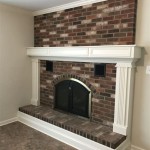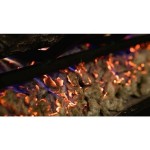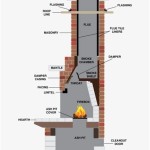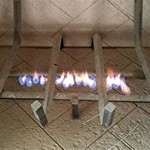Heat Resistant Fan for Fireplace: Optimizing Heat Distribution and Efficiency
Fireplaces, a staple in many homes for providing warmth and ambiance, often face the challenge of uneven heat distribution. While the immediate vicinity of the fireplace becomes comfortably warm, other areas of the room, and especially adjacent rooms, may remain significantly cooler. This inefficiency stems from the natural upward movement of hot air, which tends to concentrate near the ceiling, leaving the lower sections of the room relatively untouched. A heat-resistant fan designed specifically for fireplaces offers a solution to this problem by actively circulating the heated air, promoting a more uniform temperature throughout the space.
The core principle behind a fireplace fan is simple: to enhance convective heat transfer. Convection, the process of heat transfer through the movement of fluids (in this case, air), is significantly more efficient when the air is actively circulated rather than relying solely on natural drafts. A heat-resistant fan strategically placed near the fireplace can effectively capture the rising hot air and redirect it into the room, pushing it further away from the fireplace and mixing it with the cooler air in the space. This forced convection increases the overall heating efficiency of the fireplace, allowing for a more comfortable and consistent room temperature.
Understanding Heat Resistance in Fireplace Fans
The defining characteristic of a fireplace fan is its ability to withstand high temperatures. Traditional fans, constructed with materials not designed for extreme heat, would quickly degrade or fail when placed near a fireplace. Therefore, heat-resistant fireplace fans are built using specialized materials and components that can endure prolonged exposure to elevated temperatures without compromising their functionality or structural integrity. The specific materials used vary among manufacturers and models, but common examples include high-temperature-resistant plastics, steel alloys, and specialized electrical insulation.
Materials selection plays a crucial role in the longevity and safety of the fan. The fan blades, often the component closest to the heat source, are typically made from heat-resistant metal alloys or engineered polymers rated for continuous operation at high temperatures. The motor, the driving force behind the fan, is often enclosed in a heat-shielded housing to protect it from direct radiant heat. Furthermore, the wiring and electrical components are insulated with high-temperature-grade materials to prevent short circuits or other electrical failures. Adherence to safety standards, such as those established by regulatory bodies like Underwriters Laboratories (UL), is critical to ensure that the fan operates safely and reliably under demanding thermal conditions.
Benefits of Using a Heat-Resistant Fireplace Fan
The advantages of incorporating a heat-resistant fan into a fireplace system extend beyond simply improving heat distribution. Enhanced heating efficiency translates directly into cost savings. By more effectively circulating the heated air, the fireplace consumes less fuel (wood, gas, or electricity) to maintain a desired room temperature. This reduction in fuel consumption not only benefits the homeowner's wallet but also contributes to a smaller environmental footprint. The consistent temperature distribution also creates a more comfortable living environment, eliminating cold spots and ensuring that all occupants can enjoy the warmth of the fireplace.
Another notable benefit is the reduced risk of overheating and related hazards. When hot air is allowed to accumulate near the ceiling, it can pose a fire risk, particularly if flammable materials are located nearby. By actively circulating the air, the fan helps to dissipate the heat, preventing it from reaching dangerously high levels. This feature is especially valuable in homes with low ceilings or limited ventilation. Furthermore, the consistent temperature also helps to prevent condensation, which can lead to mold growth and other moisture-related problems. In essence, a heat-resistant fireplace fan contributes to a safer and more comfortable living environment overall.
Types of Heat-Resistant Fireplace Fans and Considerations
Different types of heat-resistant fireplace fans cater to various fireplace designs and heating requirements. Hearth-mounted fans are designed to sit directly on the fireplace hearth, typically behind or beside the fire. These fans are often compact and relatively quiet, making them suitable for smaller fireplaces and rooms. Stove fans, also known as thermoelectric fans, are specifically designed for wood-burning stoves. These fans operate without the need for batteries or electricity; instead, they utilize the Seebeck effect, converting the heat from the stove into electrical energy to power the fan. Fireplace blower kits are designed to be installed directly into existing fireplaces, often replacing or augmenting the existing damper system. These kits typically provide a more powerful airflow than hearth-mounted fans, making them ideal for larger fireplaces and rooms.
Choosing the right type of fireplace fan depends on several factors, including the size and design of the fireplace, the size and layout of the room, and the desired level of airflow. When selecting a fan, it is essential to consider the fan's noise level, power consumption (if applicable), and safety features. Reading product reviews and consulting with a qualified HVAC professional can provide valuable insights and guidance in selecting the most appropriate fireplace fan for a specific application. Proper installation and maintenance are also crucial to ensure the fan operates safely and efficiently for years to come.
The effectiveness of a heat-resistant fireplace fan is also influenced by factors such as the room's insulation, window placement, and the overall layout. A well-insulated room will retain heat more effectively, maximizing the benefit of the fan's circulation. Similarly, strategically placed windows can allow sunlight to contribute to the room's warmth, complementing the fireplace's heating efforts. Taking these factors into consideration when evaluating the performance of a fireplace fan provides a more comprehensive understanding of its overall impact on the room's heating efficiency.

1pc High Temperature Resistant Fireplace Fan Self Starting Large Wind Volume 5 Blades Efficient Heating Winter Essential Temu Start Saving

Hesroicy Stove Fan No Battery Required Low Noise Heat Resistant High Sd Rustproof Keep Warm Aluminum Alloy Efficient Distribution Fireplace Home Supplies Com

1pc High Air Volume Fireplace Fan Self Starting Temperature Resistant 4 Blade Design Circulating Heat Energy Winter Essential Home Kitchen Temu

Hesroicy Stove Fan No Battery Required Low Noise Heat Resistant High Sd Rustproof Keep Warm Aluminum Alloy Efficient Distribution Fireplace Home Supplies Com

6 Blade Heat Powered Wall Fireplace Fan Stove No Need Electricity Or Battery Self Start At Temperature Gap Friendly Circulating With High Resistance Gauge Included Shein Asia

1pc High Temperature Resistant 6 Blade Fireplace Fan Self Starting Heat Powered Efficient Heating Save Money Temu

Twin Stove Fan 8 Blade Heat Powered Fans Wood Log Burner Eco Friendly Silent High Temperature Resistant Thermos Fireplace Black Furniture Home Living Lighting On Carou

Fireplace Fan Sy Construction Heat Resistant Metal High Efficient Distribution Stove For Home Fruugo My

Log Burner Wood Burning Stove Heat Powered Fan Fireplace

Mairbeon Fireplace Fan Creative Shape Heat Resistant Metal Wood Burning Stove Blower Accessories For Home Com








